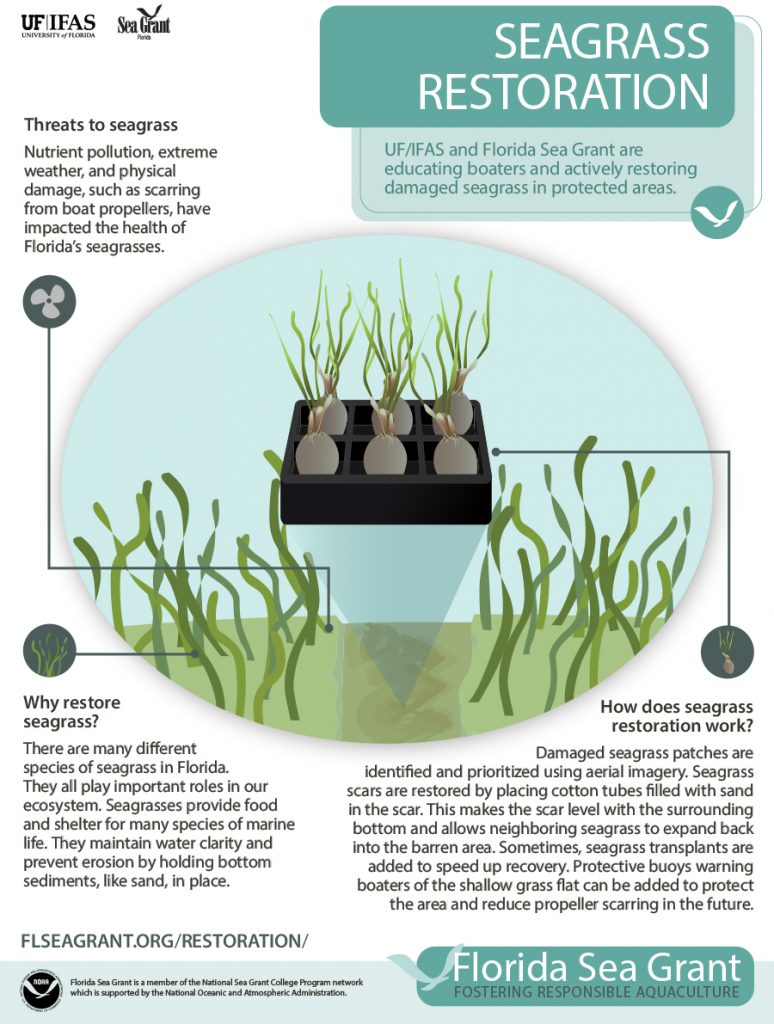Seagrass Restoration: A Bid To Renew Scotland's Coastal Nature

Table of Contents
The Importance of Seagrass Meadows in Scotland's Coastal Environment
Seagrass meadows are incredibly valuable ecosystems, often referred to as the "lungs of the sea." Their importance to Scotland's coastal environment cannot be overstated. They are:
-
Highly biodiverse: These underwater meadows support a surprisingly wide range of species. In Scotland, this includes invertebrates like the common shrimp (Crangon crangon) and various crustaceans, numerous fish species using them as nurseries (like cod and plaice), and even seabirds that feed on the abundant marine life within the meadows. Species like the long-snouted seahorse (Hippocampus guttulatus) are particularly reliant on healthy seagrass beds.
-
Natural carbon sinks: Seagrass meadows are incredibly efficient at capturing and storing atmospheric carbon dioxide, a process known as "blue carbon." This carbon sequestration plays a vital role in mitigating climate change, making seagrass restoration a powerful tool in the fight against global warming. Scottish seagrass meadows contribute significantly to Scotland's overall carbon sequestration capacity.
-
Coastal protectors: The dense root systems of seagrass meadows help stabilize sediments, reducing coastal erosion and protecting shorelines from the damaging effects of storms and waves. This natural coastal defence is especially valuable in areas prone to erosion, offering a cost-effective alternative to man-made structures.
-
Essential fish nurseries: Many commercially important fish species rely on seagrass meadows as essential nurseries for their young. The protective structure of the seagrass provides shelter from predators and a rich food source, ensuring the survival of juvenile fish and contributing to healthy fish stocks. Locations like the Firth of Clyde and the Moray Firth are known for their historically significant seagrass meadows and associated fish populations.
Challenges Facing Seagrass Meadows in Scotland
Several factors contribute to the decline of Scotland's seagrass meadows, threatening their long-term survival. These include:
-
Pollution: Runoff from agricultural land containing fertilizers and pesticides, as well as untreated sewage from urban areas, significantly impacts water quality, leading to algal blooms that smother seagrass. This nutrient pollution is a major contributor to seagrass decline in many Scottish coastal areas.
-
Coastal development: Construction of ports, marinas, and other coastal infrastructure directly destroys seagrass habitats, fragmenting meadows and reducing their overall area. The expansion of coastal settlements further contributes to habitat loss.
-
Climate change: Rising sea temperatures and increased ocean acidification are stressing seagrass meadows, making them more vulnerable to disease and reducing their growth rate. The effects of climate change are projected to worsen in the coming decades, posing a significant threat.
-
Destructive fishing practices: Bottom trawling and dredging can physically damage or destroy seagrass meadows, leaving behind barren areas that take years to recover. Sustainable fishing practices are crucial for the long-term health of seagrass habitats.
-
Boating activities: Improper anchoring and propeller scarring from boats can cause significant damage to seagrass meadows, particularly in shallow areas popular with recreational boaters. Promoting responsible boating practices is essential for minimizing this impact.
Seagrass Restoration Techniques in Scotland
Various techniques are employed in Scotland to restore degraded seagrass meadows and create new ones. These include:
-
Seagrass transplantation: Healthy seagrass shoots are carefully harvested from thriving meadows and transplanted to degraded areas, allowing them to re-establish themselves. This method, while effective, requires careful selection of donor and recipient sites to ensure success.
-
Seed collection and sowing: Seagrass seeds are collected and sown in suitable areas, allowing for the establishment of new meadows from seed. This technique is particularly useful for areas where transplantation is not feasible. Projects often involve community participation in seed collection efforts.
-
Habitat creation: Improving water quality by reducing pollution and mitigating other stressors, such as sedimentation, can allow for natural regeneration of seagrass meadows. This approach involves broader ecosystem management, improving the overall health of the coastal environment.
-
Community involvement: Many restoration projects actively involve local communities in activities such as monitoring, data collection, and planting, promoting a sense of ownership and stewardship. Citizen science initiatives are increasingly crucial for the success of seagrass restoration efforts.
-
Monitoring and evaluation: Regular monitoring of restored areas is essential to track their progress, assess the effectiveness of different restoration techniques, and adapt management strategies as needed. Long-term monitoring is crucial for ensuring the long-term success of restoration projects. Organizations such as Marine Scotland are actively involved in this monitoring process.
The Future of Seagrass Restoration in Scotland
The future of seagrass restoration in Scotland depends on several key factors:
-
Sustainable coastal management practices: Implementing policies that protect seagrass habitats from pollution, coastal development, and destructive fishing practices is crucial for preventing further losses and supporting restoration efforts.
-
Increased funding for research and restoration projects: Securing adequate financial resources is essential to support research into effective restoration techniques and to fund large-scale restoration projects.
-
Collaboration between scientists, policymakers, and communities: Effective seagrass restoration requires a collaborative approach involving scientists, policymakers, local communities, and other stakeholders to develop and implement effective strategies.
-
Long-term monitoring and adaptive management: Continuous monitoring and evaluation of restoration projects are essential to learn from successes and failures, adapt strategies as needed, and ensure the long-term sustainability of restored meadows.
Conclusion:
Seagrass restoration is vital for the health of Scotland's coastal ecosystems. By addressing the numerous challenges facing seagrass meadows and employing effective restoration techniques, we can protect these invaluable habitats and secure their future. The benefits extend far beyond ecological preservation, encompassing climate change mitigation, enhanced coastal protection, and the support of commercially important fisheries. Join the effort to protect Scotland's precious marine environment. Learn more about seagrass restoration initiatives and consider supporting organizations involved in seagrass conservation and seagrass restoration efforts in Scotland. Get involved and help us protect our vital seagrass meadows for future generations!

Featured Posts
-
 Is Marvel Losing Its Way A Critical Look At Recent Productions
May 04, 2025
Is Marvel Losing Its Way A Critical Look At Recent Productions
May 04, 2025 -
 Tampa Bay Derby 2025 Expert Picks Odds Analysis And Kentucky Derby Outlook
May 04, 2025
Tampa Bay Derby 2025 Expert Picks Odds Analysis And Kentucky Derby Outlook
May 04, 2025 -
 La Prevencion De La Estupidez Un Enfoque Practico
May 04, 2025
La Prevencion De La Estupidez Un Enfoque Practico
May 04, 2025 -
 Gymnast Simone Biles To Give Riders Up Call At Kentucky Derby 2024
May 04, 2025
Gymnast Simone Biles To Give Riders Up Call At Kentucky Derby 2024
May 04, 2025 -
 Review Honjo Modern Japanese Restaurant In Hong Kongs Sheung Wan
May 04, 2025
Review Honjo Modern Japanese Restaurant In Hong Kongs Sheung Wan
May 04, 2025
